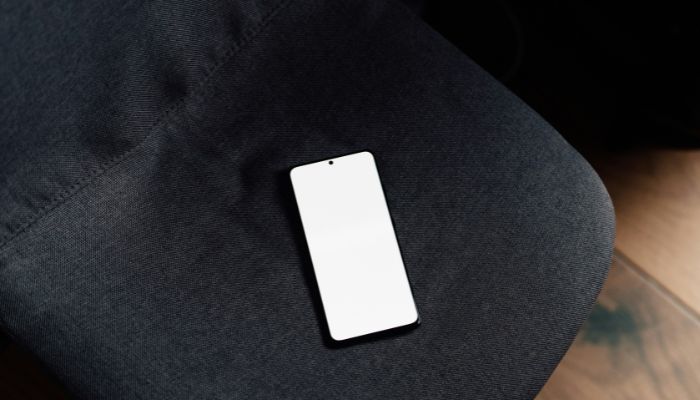
Caller ID is a telephone feature that transmits the caller’s information across the phone network, presenting it on the recipient’s phone. This system embodies a technology that enhances privacy and curtails telephone harassment. Implemented globally, the data transmitted varies based on service providers and digital devices. Simply put, when a call is made, the number is sent over the network, allowing the recipient to recognize the caller before answering.
Despite primarily showing numeric data, later advancements also introduced the display of the caller’s name. The recipieint can gather even more knowledge about this feature with further exploration.
Understanding the Concept of Caller ID
The concept of Caller ID, a ubiquitous feature in today’s telecommunication world, essentially revolves around the mechanism of identifying and displaying the caller’s information during an incoming call. This feature has both benefits and limitations that users should be aware of.
Caller ID benefits are numerous, providing users with the ability to screen calls, avoid unwanted contacts, and enhance privacy. The feature also aids in preventing telephone harassment and fraud.
However, the accuracy of Caller ID information can sometimes be compromised, due to technical glitches or deliberate manipulation, known as caller ID spoofing. This limitation highlights the importance of not solely relying on this feature for verifying caller identity.
Caller ID implementation involves the transmission of caller information during the ringing signal, allowing the receiver’s device to display it before the call is answered. Features of Caller ID usually include the caller’s phone number and, if available, the caller’s name.
However, the extent of information displayed may vary depending on the telecommunication service provider and the specific device used.
The History of Caller ID
Having explored the concept and functionality of Caller ID, it’s instructive to look back at its origin and evolution over the years.
The evolution of caller ID has had a significant impact on telecommunications, revolutionizing the way people communicate.
Caller ID was introduced in the late 1980s, a technological novelty that quickly became a standard feature in most telephone services. Initially, it provided only the caller’s number, but later advancements included the display of the caller’s name. The caller ID benefits were apparent from the start: it enhanced privacy, reduced unwanted calls, and increased efficiency in communication.
In the 1990s, lawmakers enacted caller ID regulations to protect users from abuse, such as spoofing and prank calls. These legislative efforts have shaped the way caller ID operates today, ensuring responsible and ethical use of the service.
The advancement of caller ID technology also had a profound impact on marketing. It became an essential tool for businesses, enabling them to display a professional image, build customer trust, and track call data for marketing insights.
How Caller ID Technology Functions?

Understanding the function of Caller ID technology requires a basic knowledge of the telephone network system. When a call is made, the caller’s telephone number is sent over the network, which is then captured and displayed on the recipient’s phone. This is known as the Caller ID display.
It provides users with the ability to see who is calling before picking up, a significant Caller ID benefit. However, not all users want their numbers displayed. For such situations, Caller ID blocking is used. This feature allows users to hide their phone numbers when calling others, offering an added level of privacy.
Conversely, Caller ID spoofing is a malicious practice where callers falsify the information transmitted to your Caller ID display to hide their true identity. Caller ID accuracy is of utmost importance. Errors in data transmission can occasionally lead to incorrect numbers being displayed. This is often not a fault of the Caller ID technology itself, but issues within the telephone network.
In a nutshell, Caller ID technology functions by transmitting calling party information over the telephone network, providing valuable benefits while also requiring careful monitoring for accuracy and potential misuse.
Different Types of Caller ID Systems
Delving into the realm of Caller ID systems, we find that there are several types, each with its unique features and functionalities. The main types include systems for mobile phones, landlines, and Voice over Internet Protocol (VoIP) services.
- Mobile phones, the most common communication devices today, receive caller information through a digital network. The identification process involves the network transmitting the caller’s number and, if available, name to the recipient’s phone. This information is displayed on the screen before the call is answered.
- Landline systems rely on similar principles, but their operation depends on the type of telephone network – either analog or digital. In analog networks, Caller ID information is sent between the first and second ring of the incoming call, while in digital networks, the information can be transmitted at any time.
- VoIP systems operate differently, utilizing the internet to transmit calls. In these systems, Caller ID information is embedded in the data packets sent over the internet. VoIP providers often offer advanced features, such as displaying the caller’s photo or location, enhancing the user’s ability to identify the caller.
Each system is designed to deliver the caller information efficiently, enhancing communication and contributing to user convenience and safety.
Caller ID and Privacy Concerns

While the functionality of Caller ID systems offers convenience and safety, it also raises significant privacy concerns. These relate to privacy implications that stem from the unrestricted access and dissemination of personal information. With the lack of stringent legal regulations, the data security of Caller ID systems has come under scrutiny.
A significant concern is the unauthorized use of such data without user consent. There are instances of unscrupulous entities manipulating Caller ID systems to display misleading information, a practice known as ‘spoofing’. This not only intrudes on personal privacy but can also lead to identity theft and fraud.
To safeguard privacy, implement and enforce regulations that require explicit user consent before sharing information. Additionally, heighten data security measures to prevent unauthorized access and misuse of information.
Identity verification is another critical aspect of Caller ID systems vis-a-vis privacy. Ensuring that the caller’s information matches the actual identity of the person can mitigate risks. This necessitates advanced technological solutions and regulatory support. For those concerned about privacy, an app to identify unknown phone numbers can also be a valuable tool, helping to discern whether a call is legitimate or a potential privacy risk.
The Future of Caller ID Technology
As we look ahead, the evolution of Caller ID technology promises to address existing challenges and unfold new possibilities. This primarily includes advanced features, integration possibilities, enhanced security measures, improved user experience, and market trends.
- Advanced Features: Future Caller ID systems are likely to incorporate AI and machine learning, enabling the identification of spam or fraudulent calls more accurately.
- Integration Possibilities: Integration with other systems and platforms will become more seamless. This could mean Caller ID information appearing on your smart TV screen, car dashboard, or even smart home devices.
- Security Measures: As privacy concerns continue to rise, Caller ID technology will likely evolve to offer more robust security measures, including encrypted ID transmissions, to protect users’ information.
- User Experience: The user experience will become more personalized, with customizable Caller ID displays and the ability to filter calls based on personal preferences.
- Market Trends: With the global market for Caller ID apps projected to grow, expect to see more innovative features, competitive pricing, and a focus on privacy and user-friendliness.
How Identingly Can Help You with Caller ID?

1. Accurate Caller Identification
Identingly offers services that help you identify incoming callers accurately, whether the number is familiar or unknown. Our platform provides access to extensive databases, enabling you to see the name and other details of the caller, even if they’re not in your contacts.
2. Protection Against Caller ID Spoofing
Caller ID spoofing can be a serious issue, leading to scams or unwanted calls. Identingly helps you detect when a caller ID has been spoofed by providing tools that cross-check the number with our comprehensive records. This allows you to verify the authenticity of the caller before answering.
3. Comprehensive Caller Lookup
When you receive a call from an unknown number, Identingly’s caller lookup service allows you to quickly find out who’s calling. Our database provides detailed information about the caller, including their name, location, and any related records, helping you decide whether to answer or block the call.
By utilizing Identingly’s services, you can enhance your caller ID management, protect yourself from spoofing, and ensure that your calls are handled securely and efficiently.
Conclusion
Caller ID technology, though simple in its operation, plays a pivotal role in communication today. It provides a buffer against unwanted calls and aids in personal and business interactions. However, privacy issues remain a concern.
Moving forward, advancements in technology will continue to reshape and enhance Caller ID systems, making them more secure and reliable, while addressing privacy concerns. This will undoubtedly lead to a more sophisticated and user-friendly telecommunication landscape.
FAQs Section
What is the difference between caller ID and CNAM?
Caller ID shows the phone number of the person calling you. CNAM adds the caller’s name to this information. CNAM is a service that phone companies use to match numbers with names.
How can I change the name displayed on my caller ID?
To change the name on your caller ID, contact your phone service provider. They can update the name for landlines or allow changes through an online account for VoIP services.
Why does my caller ID show the wrong information?
The caller ID might display wrong information if the database isn’t updated or if the caller is spoofing. Contact your provider to correct the details or check if someone is spoofing your number.
Is caller ID information always accurate?
Caller ID is not always accurate. Sometimes, the information is outdated or spoofed. It’s a helpful tool but not foolproof. Always verify suspicious calls by other means.